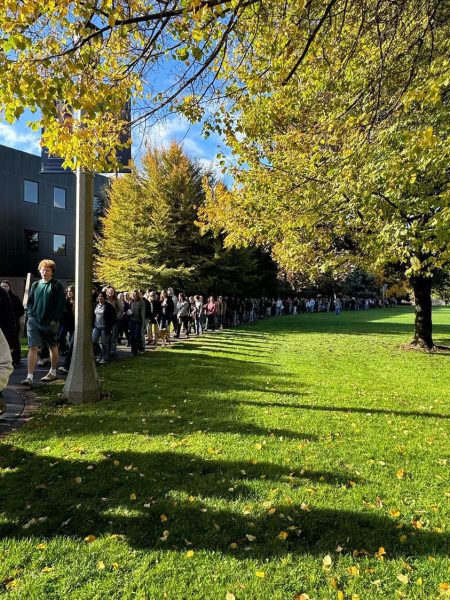Exploring Whitman’s endowment
October 15, 2020
Austerity measures instituted in response to budget shortfalls this year have brought attention to Whitman College’s 565.3 million dollar endowment. In response to a projected $19 million loss in revenue, the College has furloughed employees and removed several positions.
A college endowment is a fund made up of donations used to support budget items like student financial aid, athletics and faculty salaries. Donations are either invested or spent in that year’s budget.
Most donations to endowments are monetary, but sometimes also include gifts like land. The Whitman endowment owns and cooperates with tenants significant tracts of farmland in Eastern Washington and Oregon, an unusual asset for a school of Whitman’s size.
Chief Financial Officer Peter Harvey said that five percent of endowment funds are spent each year and make up a third of the College’s operating budget. Some of the funds are restricted to certain uses, like athletics and visiting professorships. All unrestricted funds are used on financial aid.
The cap on spending is determined using a model that is recalculated every three to five years. The restrictions are in place to maintain the size of the funds to ensure what Harvey calls “intergenerational equity.”
“Part of the responsibility of the trustees and the administration of the college is to manage that endowment so it can provide a similar level of support for future generations of students — what I call intergenerational equity, Harvey said. “We want to make sure students in the future get a similar benefit to students today.”
In a fiscal year 2019 study of 774 college and university endowments conducted by the National Association of College and University Business officers, endowment funds with over $500 million ranked in the top 25 percent.
Whitman’s endowment ranked in the top 50 among private colleges and universities in endowment value per student based on figures from 2014 and 2015. In endowment value per student, Whitman ranked above institutions like Vanderbilt and Brown University.
According to Harvey, volatility in the financial sector related to COVID-19 caused Whitman’s endowment to lose over 20 percent of its value this spring. The fund recovered the losses and gained 6.5 percent by the end of the June fiscal year. It took much longer for the endowment to recover after the 2008 financial crisis.
Decisions about the endowment are made by the Board of Trustees’ finance committee. The committee selects financial managers to directly control endowment funds.
“The investment committee engages a consultant to develop an asset allocation model; the committee then invests in professional managers that focus on different types of investments (bonds, US stocks, international stocks, etc). The committee does not select specific companies; the professional managers make those decisions,” Harvey said in an email to The Wire. “The portfolio consists of around 40 different managers with a variety of strategies. Diversification of strategies and investment assets is done intentionally so that not all investments are correlated. This lessens volatility of returns and provides more stable income to the budget.”
One of the largest controversies surrounding the endowment in recent years has been fossil fuel divestment. Students successfully lobbied the board of trustees to divest from the top 200 fossil fuel companies in Nov. 2018. One of the biggest obstacles towards fossil fuel divestment is the number of financial managers that manage endowment funds. Rather than instructing all of the managers to sell fossil fuel assets, the finance committee has to remove all assets from the managers involved in fossil fuels.
The movement at Whitman began during the 2012-13 school year after 350.org founder and environmental activist Bill McKibben spoke on campus.
Caroline Ashford Arya ‘19 was one of the student leaders in the divestment movement in 2018. She said that Divest club leadership initially submitted a proposal to the board of trustees focusing on divestment from coal. The board ultimately voted to entirely divest after six years of student advocacy. The process of divesting remains ongoing.
“It hasn’t happened yet,” Arya said. “It’s been almost two years since we divested and it is in name only.”
Harvey said that the process of divesting from fossil fuel companies is not yet complete, and that more information on the process will be shared with the campus community later this year.







